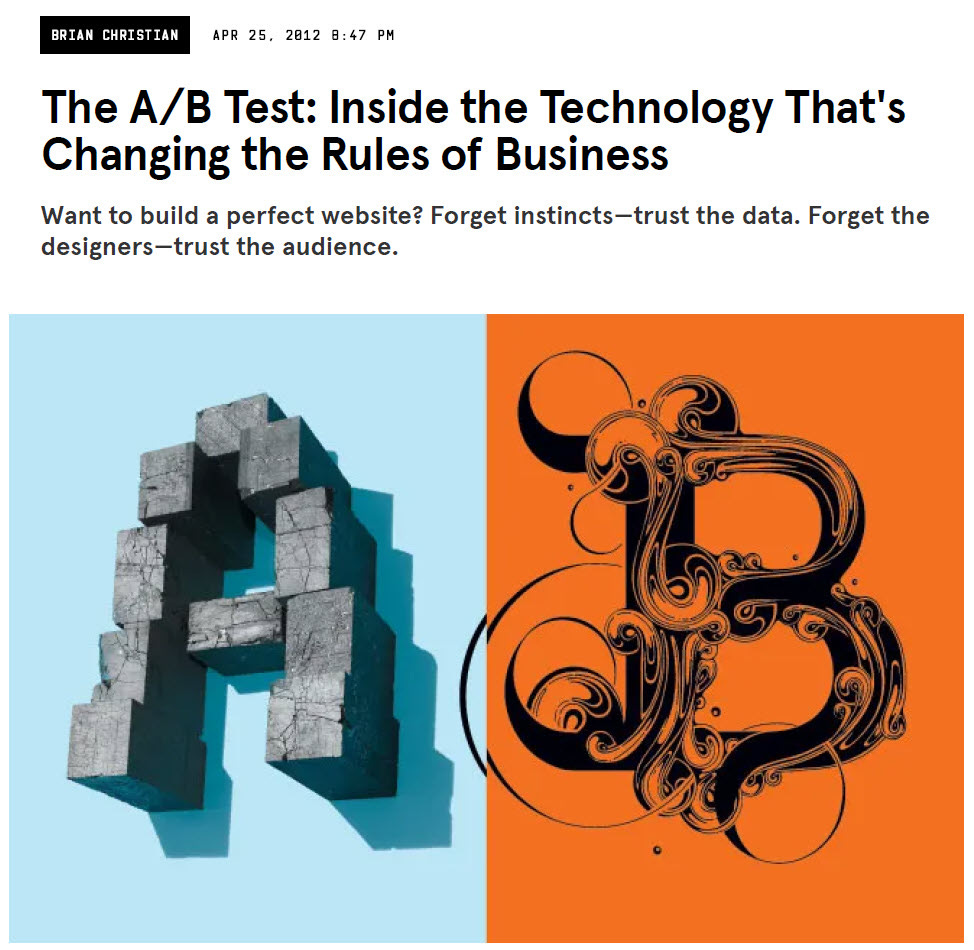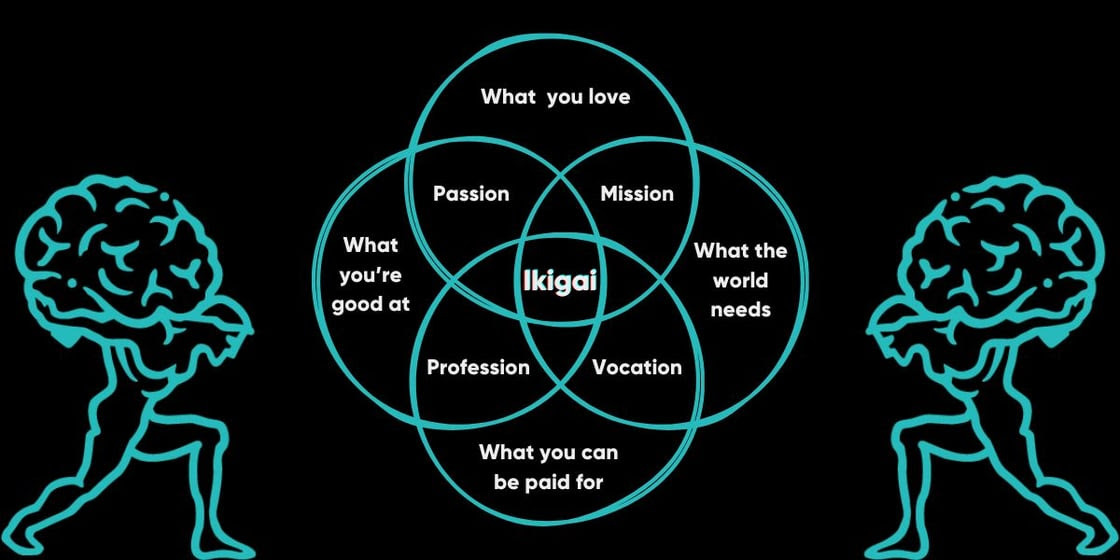Use This Simple Yet Powerful Technique to Get 'More Clicks' and 'More Purchases'
Silicon Valley gave us a gift. Why aren't you using it?
I recently asked premium subscribers what topics they would like to see me cover in future newsletters. Today’s post is a response to one such request. (HT: Jonathan E.)
About a decade ago, Wired magazine published this feature story:
Now if you’re a DR veteran like me, you probably read that headline and wondered what all the fuss was about. A/B testing? That’s just testing 101! But, perhaps like you, I never thought about how A/B testing came to be a standard practice.
According to the article, it was invented by Web developers from Google in the early 2000s. By 2012, it was an “open secret” in Silicon Valley, but many had yet to realize this simple technique could “shift the whole operating philosophy — even the power structure — of companies that adopt it.”
You can feel his excitement as author Brian Christian explains (emphasis mine):
Using A/B, new ideas can be essentially focus-group tested in real time: Without being told, a fraction of users are diverted to a slightly different version of a given web page and their behavior compared against the mass of users on the standard site. If the new version proves superior—gaining more clicks, longer visits, more purchases—it will displace the original; if the new version is inferior, it’s quietly phased out without most users ever seeing it.
A/B allows seemingly subjective questions of design—color, layout, image selection, text—to become incontrovertible matters of data-driven social science.
I tried to think back to when I first heard about A/B testing. Since I was around during the “dot-com bubble” of the late 1990s and working for a Web-based publication that was one of Google’s early advertisers, the concept would likely have been familiar to me. I’m pretty sure we used something like A/B methods to test headlines for our articles, for example. But it wasn’t until my DR days that the phrase became part of my everyday vocabulary.
By the time this Wired article was written, we were using A/B testing to decide on DRTV openings and offers. We were using it to optimize inbound phone scripts. And our early Web partners were definitely using it to optimize our landing pages. At one point, a company I worked with even developed a so-called “coin flipper” Web tool that allowed clients to create their own A/B tests.
It was so simple, and yet so powerful. I geeked out for a time and went to the next level, getting into something called “multivariate testing” (i.e. way beyond A/B). But that’s a topic for another day. The point is that making marketing more scientific greatly appealed to me. I didn’t name my company SciMark for nothing!
Remember this classic quote?
For me, that was just step one. If it sold, or if it didn’t, I wanted to know why. A/B testing allowed me to try to find out. I could create experiments (Bs) with a control (A) for the first time and attempt to isolate variables. It was an indispensable tool.
Today, this might seem mundane. Every marketer knows what A/B testing is all about. Yet I wonder how many are actively using it? Do DTC sellers still make it a common practice to create two product landing pages and run A/B tests to see which one results in higher sales? Can this even be done on Amazon? If not, why not? While it can be a bit time-consuming, the approach is one of the most ‘tried and true’ of them all.
Besides, what’s the alternative? According to the inventors of A/B testing, the answer to that question is the much-dreaded “HiPPO.” This is where your marketing is determined by the “highest-paid person’s opinion” (HiPPO).
“Most websites suck because HiPPOs create them.”
- Avinash Kaushik, Google analytics expert, as quoted in WIRED
Bottom line: Don’t rely on HiPPOs! Do what the sub-head of this Wired article recommended: Trust the data. Trust the audience. Trust the consumer instead.
Chart Watch👁️
There are three media weeks left in the year, and the #1 DRTV campaign in the nation per DRMetrix remains Ikigai Holdings’ Pooph for the ninth week in row. It’s also #17 in the master category Pet Supplies on Amazon, and a #1 Best Seller in the sub-category Dog Deodorizers. Word on the street is it’s also killing it at Walmart.
This one should shape up to be the biggest hit of the year — even though it only debuted in October.
News(letters) You Can Use 📰
By the way, did you ever wonder about that name “Ikigai”? Codie Sanchez to the rescue! In her latest Contrarian Thinking newsletter, she explains the Japanese concept:
You draw out four circles: things you love to do, things you’re good at, things you can be paid for, and things you think the world needs. In a perfect world, the thing that you do sits right in the middle…
Consistently strategize around this, and you’ll find ways to keep yourself more fulfilled over time.
I’m guessing the folks over at Ikigai Holdings are feeling pretty fulfilled right about now!









It's interesting to think about. I'm sure we will get there in no time at all. But what I've seen so far hasn't crossed the "uncanny valley." (Ask ChatGPT what that is if you don't know! ;-) I think any AI pitchman would need to cross that chasm in order to sell humans.
My favorite parody of how far we are right now is the "Shak's Shaker Shamillion" DRTV spot: https://youtu.be/8TDN9o0ZKds
Do you feeling like buying one after watching that? LOL
Hi Jordan
I was thinking In China they started producing shows via AI not that it is very sophisticated vision or the VO but it's creating something simple. what are your thoughts on that maybe soon it will find the DRTV market.